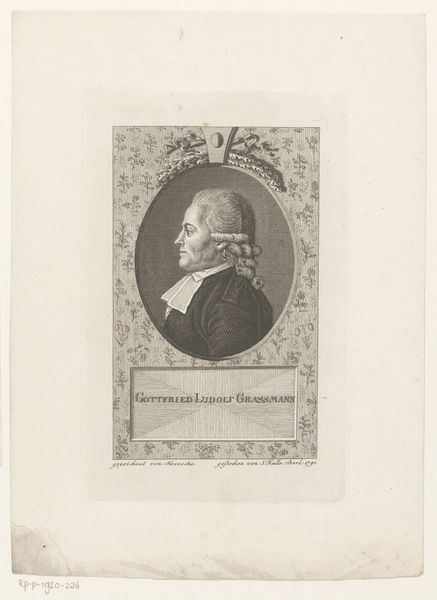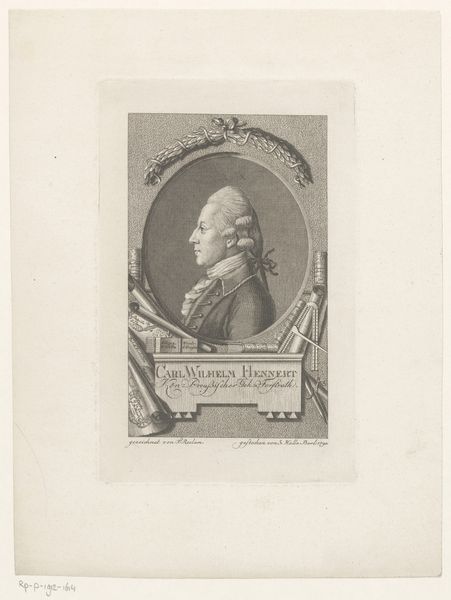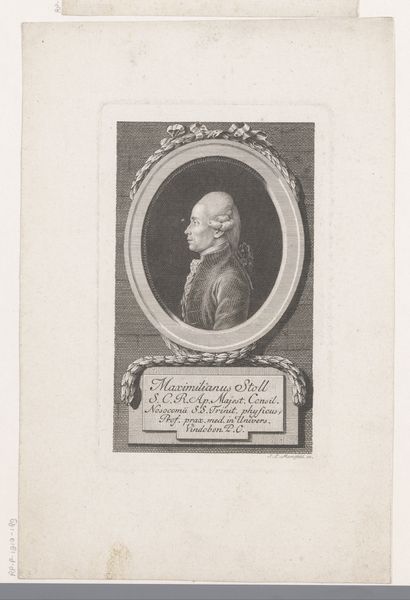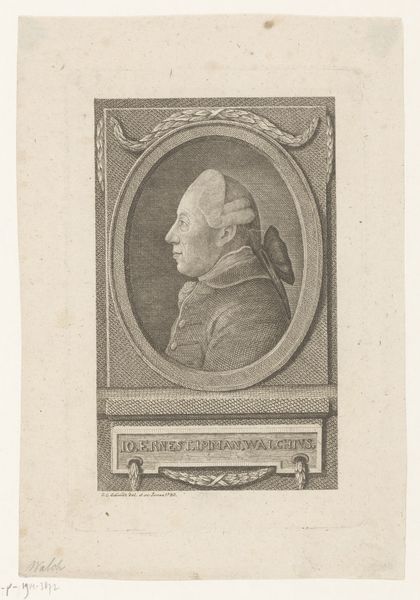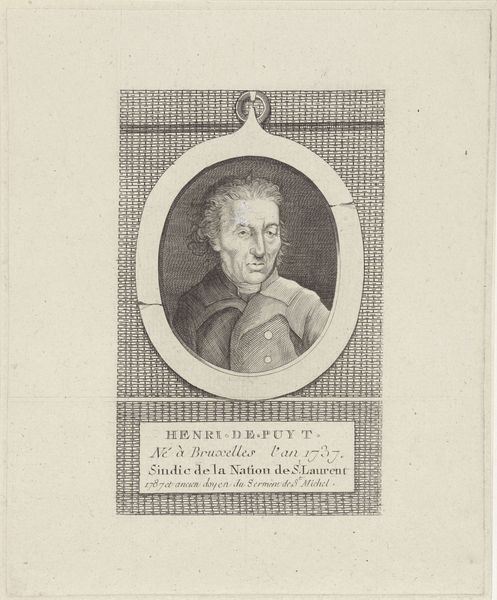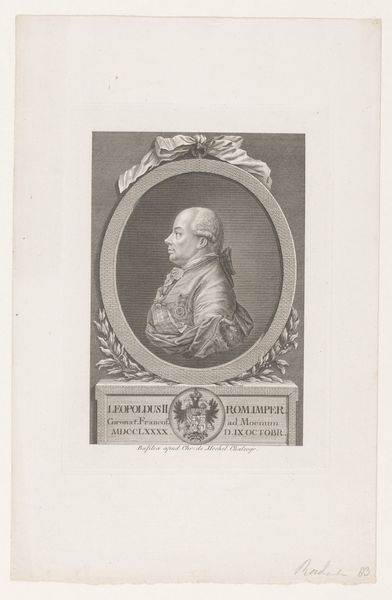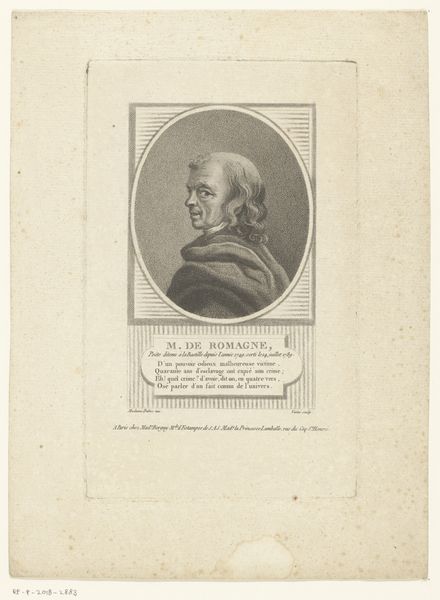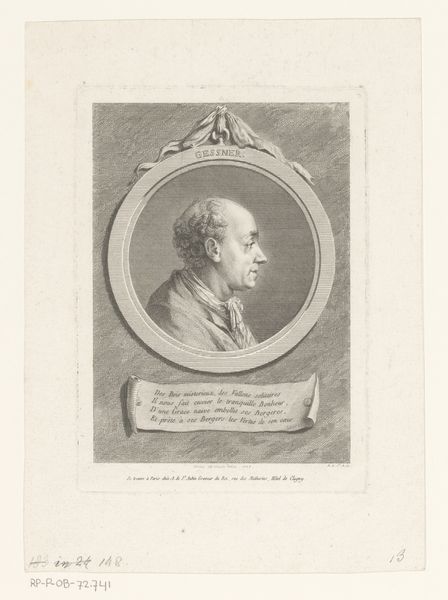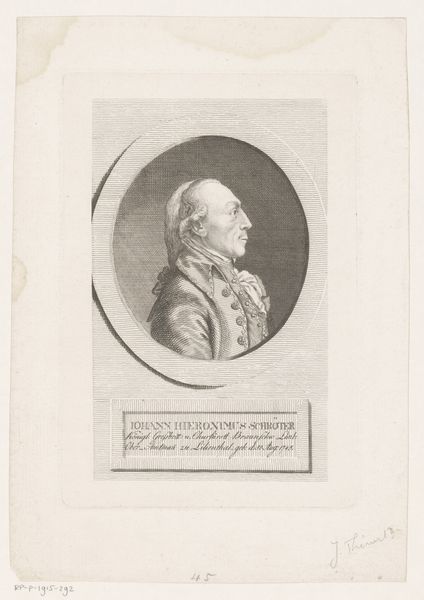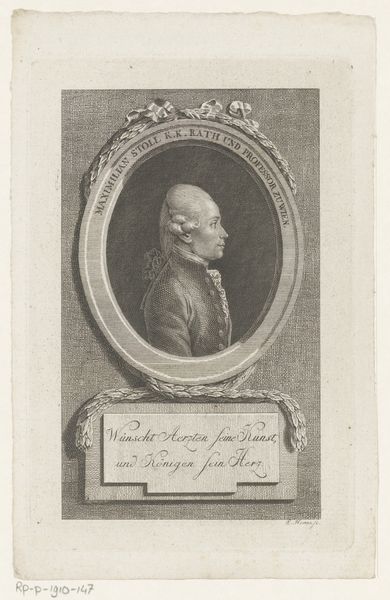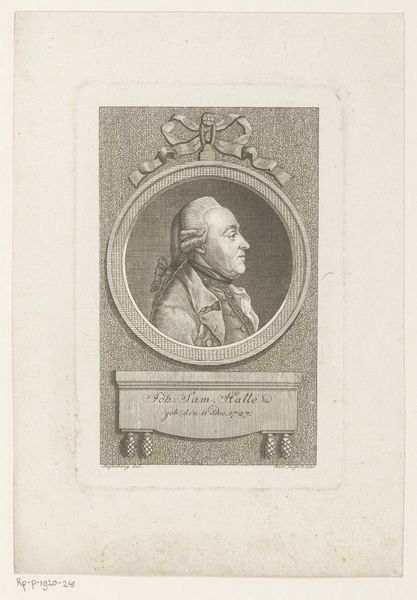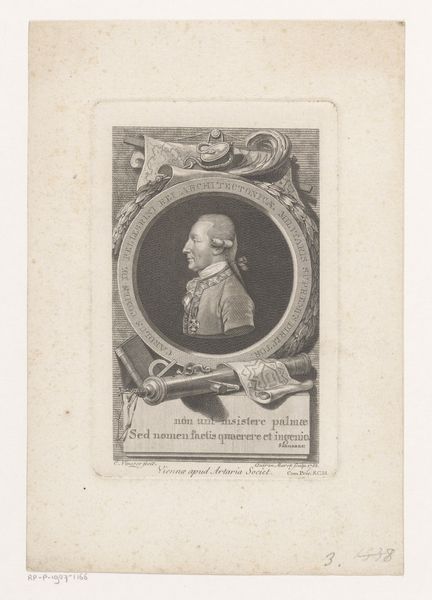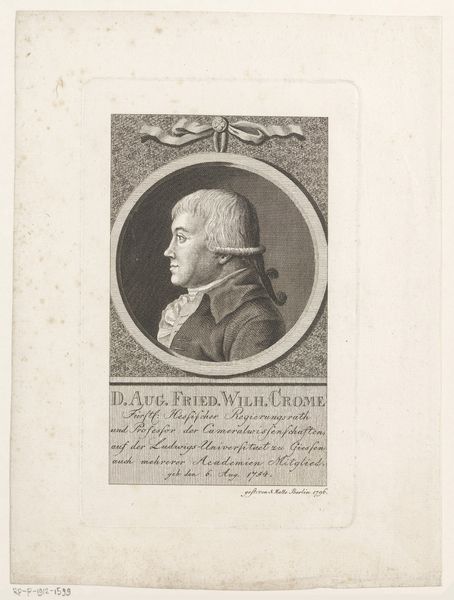
Portret van Hieronymus von Colloredo-Waldsee, aartsbisschop van Salzburg 1786
0:00
0:00
print, engraving
#
portrait
#
neoclacissism
# print
#
old engraving style
#
history-painting
#
academic-art
#
engraving
Dimensions: height 170 mm, width 126 mm
Copyright: Rijks Museum: Open Domain
Curator: Immediately, I'm struck by the profile. There's something very austere, even cold, in the way he's depicted. The hard lines of the engraving only accentuate it. Editor: Yes, it's undeniably a formal piece. What we're looking at here is a print made in 1786 by Christoph-Wilhelm Bock. It is a portrait of Hieronymus von Colloredo-Waldsee, Archbishop of Salzburg. A key figure of the Enlightenment era. Curator: The circular frame adorned with laurel wreath contributes to that classical feel, a nod to authority and permanence. Tell me, what visual elements strike you as symbolic? Editor: Oh, many. The cross hanging from his neck is heavy with meaning, of course—a potent symbol of faith and power. The wig itself speaks volumes; its elaborate styling marks him as a man of status within the rigid social hierarchies of the time. Curator: Exactly. I see this portrait less as an attempt to capture an individual and more as an articulation of institutional power, perhaps designed for dissemination among the Church's allies and constituents. This was just before Mozart famously fell out of favor with the Archbishop. It is impossible not to view it in the context of the impending tensions of that revolutionary moment. Editor: A valid point. Considering the Archbishop’s known views and position of authority within the religious and political landscape, the meticulous detail serves to solidify his image. Almost as if reinforcing tradition against the backdrop of burgeoning societal shifts. Curator: So, it serves almost as propaganda in that sense. It's a visualization of power presented in a visually coded, very strategic manner. Editor: Precisely. It's a compelling visual document reflecting an era of both established traditions and significant upheaval. Curator: Ultimately, for me, its stark formality underscores the precariousness of power at the dawn of radical change. Editor: And I am left considering the weight of symbols. These endure over the centuries, inviting us to reflect upon faith, hierarchy, and identity, and all these symbols endure and connect the past with the present.
Comments
No comments
Be the first to comment and join the conversation on the ultimate creative platform.
